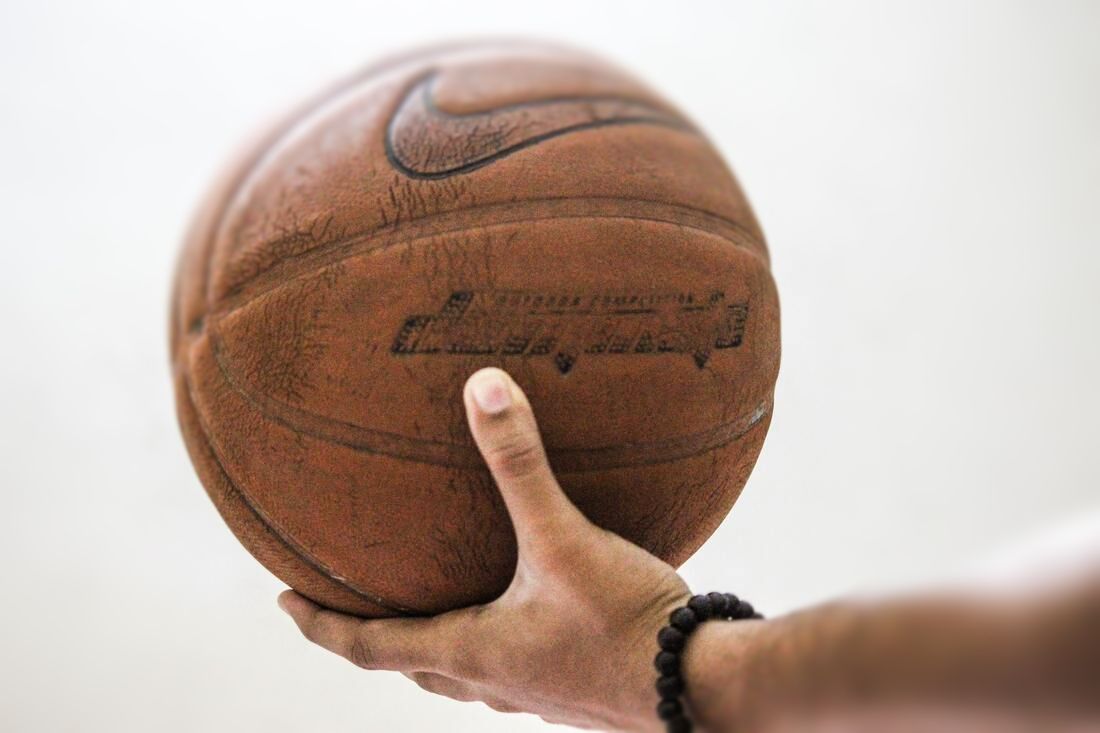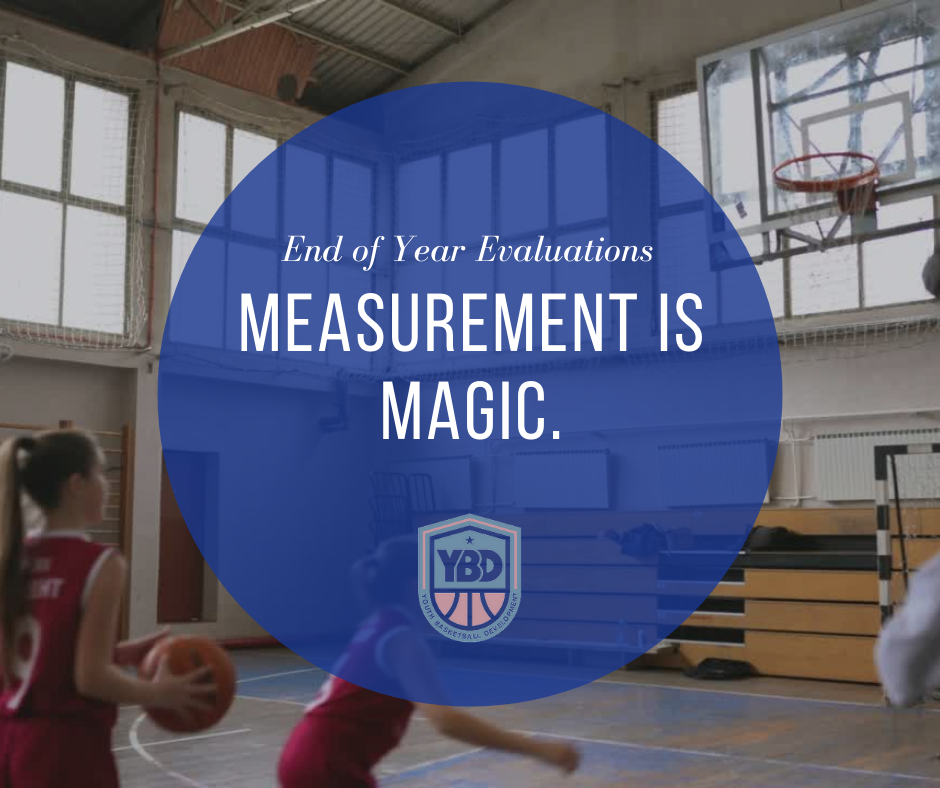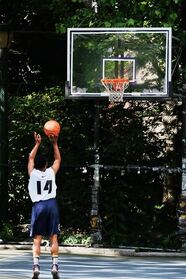LEARN
|
These are some great edits to show your youth players various finishing techniques at the rim. The edits include two foot finishes (power lay-up, air'em, and donut all off the stride stop footwork) and one foot finishes (speed lay-up, inside hand finish, and reverse lay-up).
We tell our players to play off two feet in the paint when there is going to be contact and to go off one if there is daylight. The vast majority of the time in the half court situation we are emphasizing playing off two feet as we believe it gives players a stronger base to absorb contact and it slows them down to make better decisions. One way we teach to play off two feet is with the stride stop footwork. Have a great 4th of July week! -YBD Staff Having a protection plan when there has been no advantage created or against pressure can help improve decision making and offensive efficiency. The below video shows edits of the Nash dribble, Barkley move, stride stop, and protect-attack dribble. These can be great to show your kids (10 years old and up) a visual of what poise and patience with the ball look like. On most youth teams there may be two to three players that can dribble equally with either hand. These players typically are intrinsically motivated to work on their game and skills outside of organized practices.
The question becomes how can we get more than two to three players on a local youth team to work on their skills outside of practice. For this article we will specifically focus on improving their off hand ball handling. To help with this task we will be using the book, Tiny Habits: The Small Changes that Change Everything, by BJ Fogg, PhD. Per Dr. Fogg, for action to take place when motivation is low the behavior must be easy to do. As an example, if the aspiration is to floss your teeth daily start with one tooth. A main theme of the book is to take a behavior "you" want, make it tiny, find where it fits naturally in your life (a prompt), and nurture its growth. In this case, the behavior and aspiration we want is to improve off hand ball handling. Below are specific examples on how to make it tiny for your players with a prompt:
To make it a habit it's important your players find a prompt that naturally fits into their life. Examples could be pre or post brushing teeth, a meal, showering for the day, or returning from school. The prompt reminds your players naturally to dribble with their off hand now and should be something that happens at the right time for your players to perform the behavior. Dr. Fogg also states that emotions create habits by wiring the habit into your brain. For this reason your players must celebrate (create shine) after performing the behavior. Examples of creating shine could be:
Lastly, designing the home environment to make the habit easier to perform can make a big difference in whether the action gets done. Examples of improving environment design would be:
As we all know motivation can be fickle. If our players can find a way to make a habit this can make all the difference. It can take an average player and make them solid. Will they miss days? Yes. Tell them to not be too hard on themselves and to just start again. Slowly the off hand will get better and better and they will naturally increase the challenge. Thank you for reading our content and feel free to contact us with any questions! In education there are standardized proficiency testing for Math and Reading and for strength training baseline testing is done to later obtain comparison measures and determine effectiveness of teaching or training. However, in basketball, youth coaches typically do not take the time to obtain baseline skill measures, a report card for basketball, or have clear expectations of what should be accomplished at certain age ranges. By doing a report card of skill development you are telling your players and their parents that this skill development thing is important and you as a coach care about their improvement in this area. Peter Drucker, the legendary management consultant, said what gets measured gets improved. We break down this skill development and testing into three age phases, five through eight years old, nine through twelve years old, and twelve through fourteen years old.
We are now going to get technical and nerd out on skill development for the next few paragraphs so bear with us. For ages five through eight years old there are six key skills we are trying to accomplish: being in the triple threat position, jump stop and pivoting, proper stationary dribbling technique right and left hands, jogging while dribbling the ball with right and left hands with head up, very basic shooting mechanics not at a rim, and proper passing technique for bounce and chest passes. On our Members Page there are age specific drills and games with bullet point teaching techniques to address all six of these skills. For standardized skill testing for this stage of development we recommend four different tests which are: 1. Demonstration of a jump stop to triple threat position, pivot, then throw a proper pass without traveling to a parent or coach. 2. Perform ten pound dribbles with right hand, ten pound dribbles with left hand, and ten cross-overs in fourteen seconds or less with head up. 3. Dribble at jogging speed with right and left hands twenty feet down and back with head up. 4. Demonstrate proper shooting form with the ball, not at rim but into the air, to a parent or coach. There is an example testing sheet for all three phases of development on the Members Page along with take home drill sheets. In ages eight through twelve years old, the “Golden Age of Skill Acquisition, there are four main skill areas we are emphasizing which are: footwork and pivoting to include the direct drive and cross-over step, ball handling to include full speed dribbling with the right and left hands, change of speed, and one change of direction move, basic shooting fundamentals at the rim at an appropriate height, and beginning stages of finishing at the rim. There are video examples of all of these skill areas and testing as well as drills and games to address on our Members Page. There are just four tests to address these skills which include: 1. Demonstration of v-series drill (cross-overs, between legs with right foot forward, and between legs with left foot forward fifteen times each) in twenty seconds or less with head up. 2. Demonstrate a full speed lay-up with right and left hands to parent or coach off one foot. 3. Demonstrate proper form with direct drive, cross-over step, shot fake, and create space pivot off left foot for right handed players to a parent or coach at game speed. 4. Demonstrate a proper shooting form with a ball at the rim to a parent or coach from an appropriate distance. For our third phase of skill development for ages twelve through fourteen years old, there are four main areas we hope to progress to and emphasize which include: ball handling with equal symmetry for right and left hands with beginning mastery of one to two dribble moves, proper footwork and pivoting with the jab series and ability to square up to rim at various angles, progression of finishing moves at the rim, and grooving and repetition of proper shooting form off the catch and dribble. Again, video examples with drills and games to address can be found on our Members Page. The five tests to obtain baseline measures and determine effectiveness of teaching are: 1. Demonstration of pound series (pound cross-over, pound between the legs, pound behind the back) one minute timing of sixty repetitions or greater. 2. Demonstrate ninety percent or greater hand symmetry on speed dribble test with head up. 3. Demonstrate a full speed reverse lay up with the right and left hands with proper form to a parent or coach. 4. Demonstrate proper form with jab series footwork off left foot for right handed players to a parent or coach at game speed. 5. Demonstrate ability to square up on inside foot and shoot the ball with proper form off self-pass. We feel that the best way to teach and develop these skills is to drill it and then game it. See below for sample testing or year end review forms: We are very excited about our new home program called Ball Handling Kingdom. The program is designed for ages 6-14 and players will progress from sloth to cheetah levels over the course of 5-6 weeks. Each daily skill session takes less than 10 minutes to complete to improve focus and intensity. We guarantee improved off hand development, vision, and the ability to change direction, speed, and height. See the below pdf for the entire Lion week skill session designed for ages 9-12 along with one of the corresponding drill videos. The entire cost of the membership program is just $5.00 and if not happy we will refund your money! Lion Level Ages 9-12 pdf Great footwork can allow you to create space, improve decision making, and finish at the rim against more athletic competition. Watch this video on the stride stop finish which includes game edits, teaching progression, and a mini-workout that can be done at home. This is a free 10 to 15 minute ball handling workout that addresses ball quickness, changing speeds, and creating space. It can be done in your basement, garage, or driveway areas as part of your home physical education class! We are also now offering home individual instruction classes one time per week for 30 minutes. Go to our home page at youthbasketballdevelopment.com to find out more.
The practice of incorporating a dynamic warm-up routine for youth basketball players for ages 9 and up has become common practice. However, there is wide variance in what is actually performed. As coaches we want our dynamic warm-up routine to be simple and efficient. Below, based on our literature review, are common concepts to incorporate in a dynamic warm-up along with two sample routines. These routines could be done in a hallway or commons area prior to the assigned start of practice to allow greater efficiency of valuable gym time.
What to include for a 5-10 minute basketball dynamic warm-up:
After performance of a dynamic routine we recommend at the start of your practice plan performing non-live basketball specific drills at increasing intensity to further engage the basketball specific musculature and nervous system. Such drills could include ball handling, pivoting/footwork, finishing at the rim, passing, shooting, or progressive transition work up and down the floor with no defense involved (on air). Example of an evidenced based dynamic warm-up routine:
The most extensive and researched dynamic warm-up out there currently: If you are a youth coach or organization that is looking for what is currently considered the best researched and evidence based practice for a dynamic warm-up routine then we recommend the FIFA 11+Kids (link to manual). This program, performed two times per week, has been shown to significantly reduce injuries in football (soccer) players as well as improve physical performance. One drawback is the program takes 20 minutes to perform and for basketball we recommend not doing exercise 7 (roll over) based on the hardness of a gym or hallway floor compared to a grass surface. Written by Katie Larson, PT, SCS, CSCS |
Archives
April 2024
Categories
All
|




 RSS Feed
RSS Feed